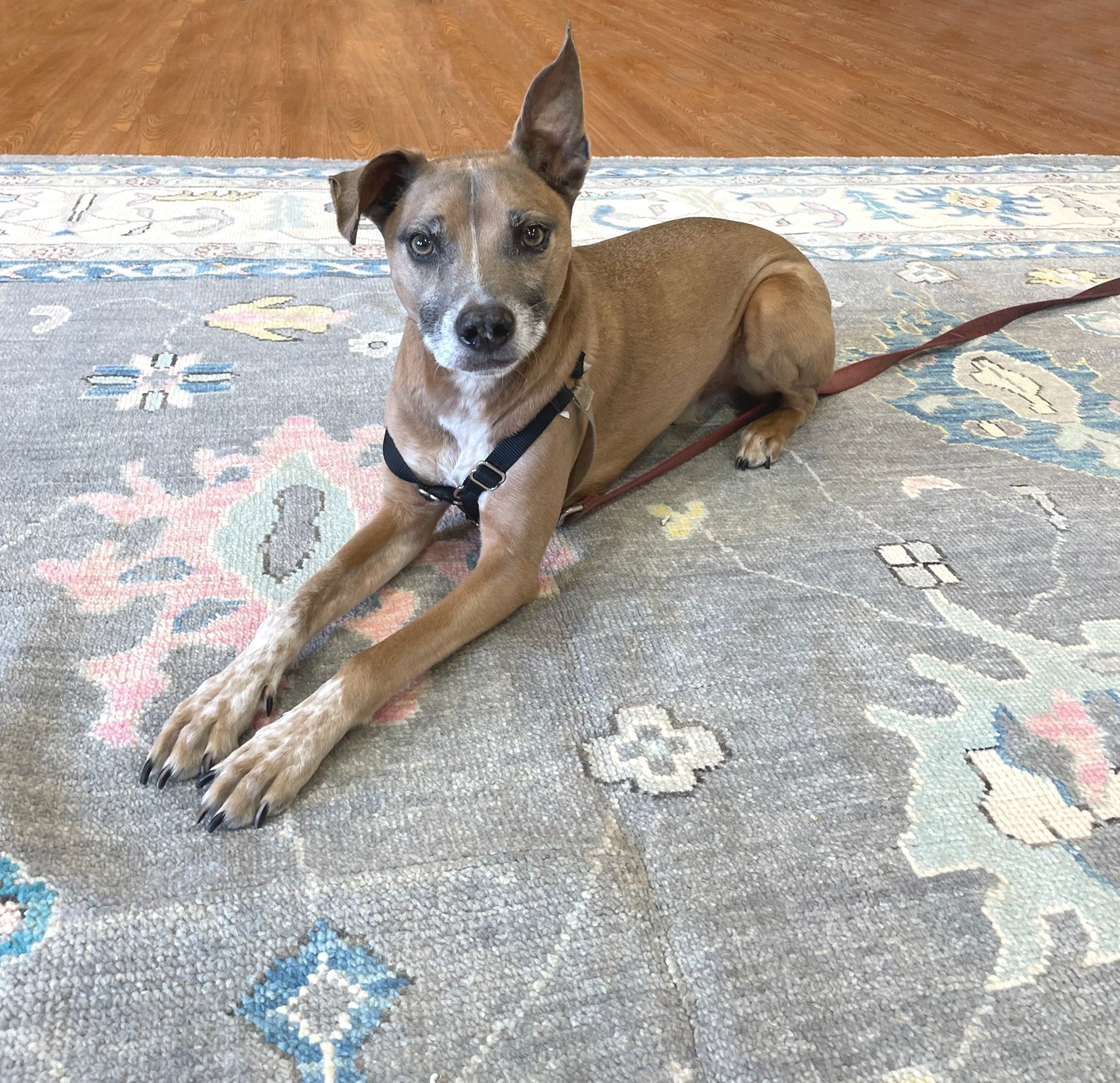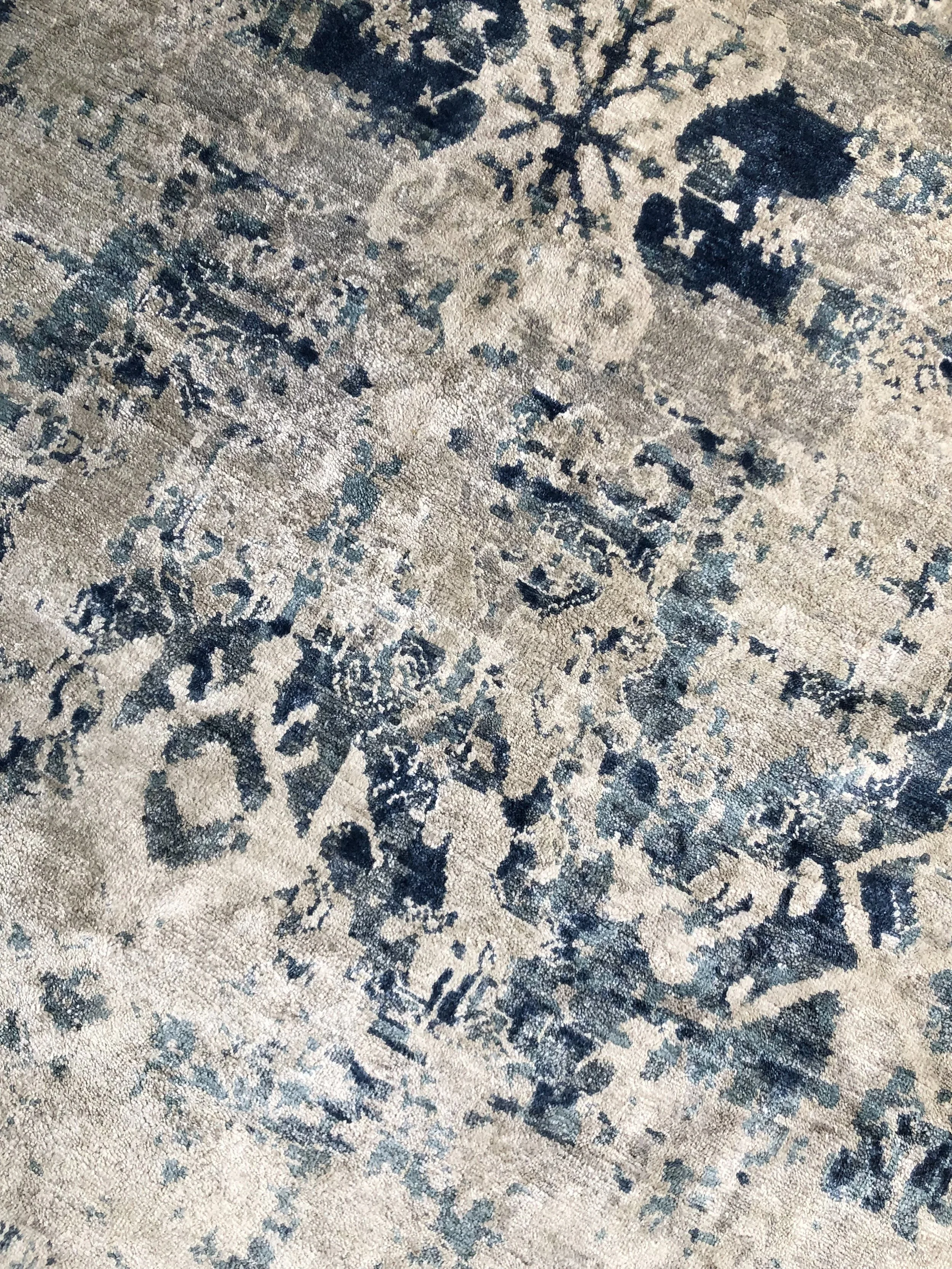Cleaning Guide (Part 2): Caring for Your Rugs
No matter how hard we try to avoid it, there are times we're going to find a spot on our rug, and unfortunately, wishing it away isn't going to work. (Freaking out doesn't work either- we've tried!)
SO. We've teamed up with our friends at The FabricShield to bring you some tried-and-true tips for spot cleaning your rugs!
We want to start by recommending that you treat fine rugs (and upholstery pieces) you've invested in. This will prevent future blood-pressure spikes when your guest spills a glass of wine, or your dog runs in with muddy paws. It's worth having peace of mind knowing you're taking care of your investment, and that it will stand the test of time and spills. This advice also goes for viscose rugs, as they are not as easily treatable.
Okay, let's get down to it.
First thing's first: Know your rug's fiber. Wool will require different care than Viscose which requires different care than Nylon. We recommend keeping your rugs’ care tags nearby for easy reference.
Second thing to keep in mind: Time is of the essence. When you notice a stain, (regardless of your rug's fiber content), the first thing you want to do is throw a highly absorbent towel over top to soak up excess liquid. To avoid smearing/spreading the stain or crushing the fibers, gently blot the stain - do not rub or apply firm pressure - and always blot from the outside in. Then, use a vacuum to create a suction seal around the stain for a few minutes.
Now, to treat the stain! Here's where knowing your rug's fiber content is important.
Always check your labels, friends!
Woven or Braided Rugs:
Check the label to make sure the rug is water-cleanable (such as wool, silk, polyester, or cotton). Blot first, spray/dilute with water to dilute the stain, then blot again- repeat as needed. If stain persists, use a damp sponge and mild detergent to foam wash. Brush and blot as per the product's directions, let sit for a few minutes, and rinse or vacuum after. Dry thoroughly!
Hand-Knotted and Antique Wool Rugs:
These types of rugs may not have a fiber content label. They are usually wool, but it's possible they are blended with viscose or rayon- both of which are extremely sensitive to liquid, so using water-based cleaners can cause permanent damage. If you are unsure, you can test a hidden corner prior to treating the stain, but we recommend giving a professional a call!
Natural Fibered Area Rugs:
Rugs made from coir, rush, grass, sisal, or jute typically feature an open weave, allowing dirt and grit to sift through to the floor underneath. Vacuuming both the rug and the floor underneath regularly is recommended. If a spill occurs, dry as soon as possible to prevent browning. Tip: Using a blow dryer on a low setting can speed up the drying process.
Photo by Julia Lehman Photography
On tough or old stains, spray with water to dilute, followed by vinegar (enough to cover the stain, but do not saturate). Then spoon baking soda over the stain. Cover with a bowl or stool (to ensure it is not stepped on) and let sit for at least 1 hour, or 1-2 days for particularly stubborn stains. Vacuum up!
*Always test an inconspicuous part of your rug before treating.
If you're ever unsure, call a professional. We recommend The FabricShield. They provided full-service fabric protection with complimentary spot cleaning after care! We've worked with them for years, and their service is unmatched. Give them a call - tell them Kat Robbins sent you!
Happy cleaning!



